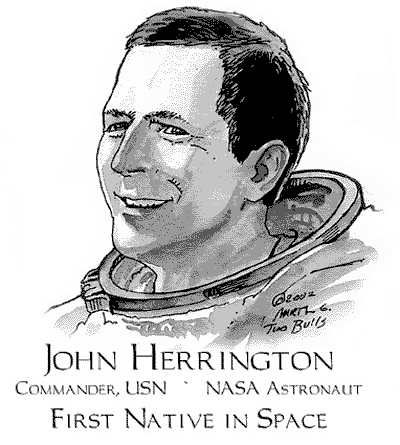My first thought was, "Um, duh?"
My second thought was a little heavier. I remembered doing research a year earlier for a college paper about the Washington Redskins and the sports mascot debate. For many people, the portrayals of American Indians in movies, television, halftime shows, books and cartoons may be the only "contact" they ever have with the American Indian culture. The context of the stories told about American Indians is almost always in the past tense, in a past time, contributing to a subconscious thought that American Indians no longer exist and/or are part of fairy tales.
That's why the exhibit at the museum felt compelled to explain to its visitors that American Indians exist today--you just might not recognize them because they're in hard hats and suits.


5 comments:
Hi Rob, I came across this web site http://www.fanblogs.com/ncaa/005739.php which I feel is very insightful as to the mindset of these "fanatics". It looks like the American Indian still has an uphill battle on their hands.
Yep.
By the way, I wrote about the NCAA decision in Why FSU's Seminoles Aren't Okay.
You think people have bought into Native stereotypes more in the last 30 years than in the previous 30 years? I don't see any evidence of that. Instead, I'd say the belief in and use of Native stereotypes is declining slowly but surely as people like us educate others.
I don't judge whether certain tribes or members of tribes are more or less "Indian" than others. Besides, "Indian" is a political designation, as the Supreme Court has ruled, not a racial designation. Since Herrington is an enrolled member of a federally recognized tribe, he's an Indian by definition.
Herrington is an excellent choice to illustrate this item because "astronaut" is a classic job that many aspire to but few obtain. Other rarefied jobs of that type include the US president, Nobel-Prize winning scientist, and Academy Award-winning actor. When a Native achieves one of these positions, I'll use that to illustrate my postings.
I don't hold that someone has to be enrolled to be an Indian. But I do hold that everyone who's enrolled is an Indian. (Excluding the occasional bookkeeping mistake, of course.)
Will Rogers, Wilma Mankiller, Wes Studi, Rita Coolidge...none of these are real Indians? Hmm, could've fooled me. I think I'll stick with the standard definition over Russ's definition.
I don't know Fred Begay, but a quick search reveals that his parents are Navajo and Ute. From what I can tell, he may be a pureblooded Indian. In any case, what does he have to do with the Five Civilized Tribes?
My stories will have Indians from these tribes, as well as every other tribe I can manage. Why? Because I want to write about the full range of Indian experiences, even if some tribes are more acculturated than others.
I've never heard of this alleged prejudice against the Five Civilized Tribes by Oklahoma's other tribes. Of course, I've never been to Oklahoma. I'll have to ask people I know if it's as bad as Russ says.
I think I mentioned that movies such as Dances with Wolves have treated the Pawnee badly. I've never said anything negative about them myself.
Post a Comment